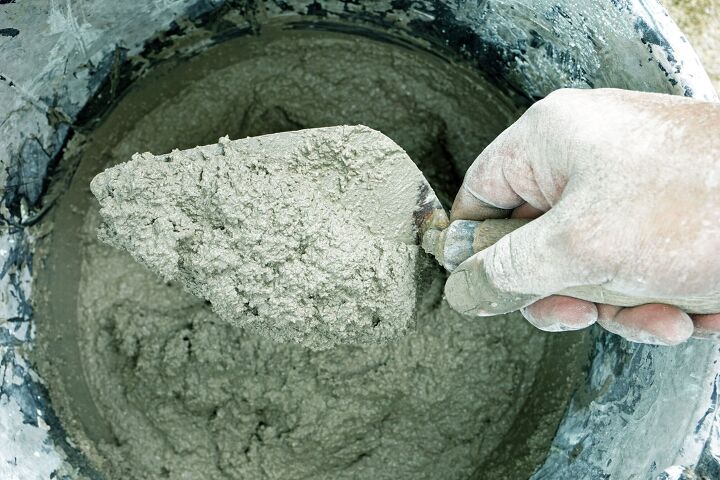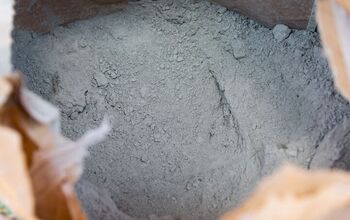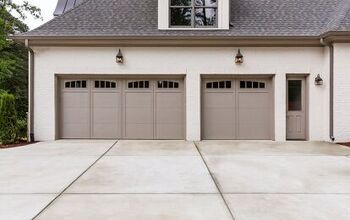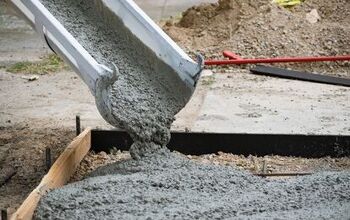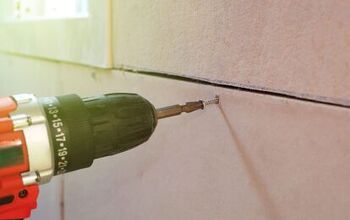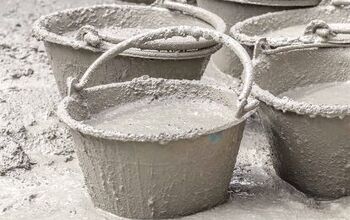Is Portland Cement Waterproof? (Find Out Now!)

Are you wondering, “Is Portland cement waterproof?” Well, you’ve come to the right place because we have the answer you’re looking for. Portland cement, the most common cement in general use worldwide, is not waterproof on its own.
This fine powder is typically combined with water to create a slurry to be used as an anchor grout, or water and aggregates to form concrete. In either form, Portland cement is still not waterproof. Fortunately, there are methods for waterproofing concrete. Since concrete is naturally porous once cured, it’s important to waterproof it to prevent water from deteriorating the surface over time.
Continue reading to learn more about what Portland cement is, why it’s not waterproof, and the various methods for waterproofing concrete surfaces.
Do You Need Concrete, Brick, or Stone Pros?
Get free, zero-commitment quotes from pro contractors near you.

What is Portland Cement?
Contrary to popular belief, Portland cement is not a brand name. Instead, it is the most common form of cement that is used in pretty much all concrete. In fact, “cement” is often used to refer to Portland cement. Oftentimes, the terms “concrete” and “cement” are used interchangeable, however, the latter is just one of the many ingredients used to create the former. Portland cement is a fine, grey powder that binds sand, gravel, and water to form concrete.
To create Portland cement, limestone, shale, and clay are ground into a powder and fired in a kiln. When baked, what results are known as clinkers, which are then ground up again and mixed with gypsum to yield Portland cement.
Is Portland Cement Waterproof?
Portland cement is almost never used on its own, as it is a powder. However, it can be combined with water to create a Portland slurry that can then be used as an anchor grout. Without any additional additives, Portland cement slurries are not waterproof. In other words, Portland cement is not waterproof on its own.
While Portland cement is more waterproof than limestone, for instance, it is not waterproof as a slurry or even as a mortar. A mortar is created by mixing Portland cement, water, and a fine aggregate.
Is Concrete Waterproof?
Concrete is a manmade material that is comprised of three main components: Portland cement, water, and aggregate (sand, gravel, or rock). Commonly used in the construction of roads, sidewalks, bridges, and buildings, concrete is incredibly durable over time. However, the main problem with concrete is that it becomes porous as it dries. For this reason, concrete is not waterproof.
Newly cured concrete may be waterproof for a short period of time, but eventually, water will penetrate the surface and cause the concrete to deteriorate. Although it may seem like water is simply collecting on the surface of your concrete, it is also soaking into it.
As water seeps into concrete, it starts to wear it down and form larger pockets where water can accumulate and result in more substantial damage. Water that collects in concrete can also lead to staining on the surface over time, and potentially infiltrate the structure to cause further destruction.
Waterproofing Concrete
Fortunately, while concrete isn’t waterproof, there are a number of products that can make concrete less porous as a whole. Some may be mixed in the concrete when it’s poured, while others are applied as surface coatings once the concrete has cured. There are even specialty coatings available that shield against surface stains and the UV rays from the sun.
Nowadays, most building codes require liquid waterproofing be used on all newly installed concrete basement walls or structures. The best way to waterproof concrete will depend on a number of factors, including the access to the surface and its integrity. With that said, here are some of the most common methods for waterproofing concrete:
1. Liquid Waterproofing
The most common method to waterproof concrete involves the use of a liquid waterproofing product that is specifically engineered for this purpose. Typically available in gel form, this product is a thick substance that transforms into a rubber-like coating once applied to concrete. For the waterproofing to be successful, the concrete must be fully cured and clean before begging the application.
To apply liquid waterproofing gel, you need a special mop or roller to spread it on the surface. Then, allow it to dry thoroughly. Once the product has dried and become a rubbery texture, backfilling soil against it will help secure it in place.
2. Crystalline Slurry Compound
Another effective waterproofing method is to use a product called a “Crystalline Slurry Compound.” When applied to concrete, the compound chemically reacts with water and unhydrated cement components to form needle-like crystals that fill the cracks and pores found in the concrete.
These crystals work to permanently block water and moisture from entering. This method ensures permanent waterproofing, as more moisture will initiate more crystallization.
3. Rubberized Sheets
This method uses large, square sheets made of a sticky rubber-like substance. These sheets are installed against a concrete wall or foundation that is below grade. Once placed, the rubberized sheets adhere permanently and cannot be removed. This solution typically delivers more even coverage and thickness than liquid-based options. Though, if not properly installed, the seams between sheets can be an entry point for water.
Do You Need Concrete, Brick, or Stone Pros?
Get free, zero-commitment quotes from pro contractors near you.

4. Bentonite Sheets
Bentonite sheets look similar to cardboard, but with bentonite waterproofing in between the layers. These sheets are installed to concrete to provide waterproofing to below grade locations. When water tries to infiltrate the layers, the bentonite clay expands to far more its original size.
The drawback to this option is that it needs water in order for the clay to be activated. Also, the effectiveness can be difficult to judge until water has already made its way into the material.
5. Cementitious Waterproofing
A very easy at to waterproof concrete is by applying a cementitious waterproofing product. This material is applied to the surface of the concrete just like you would apply mortar, in a thick, uniform layer. Once dried, the material is as hard as the concrete itself. The drawback to cementitious waterproofing is that it is not flexible and will eventually crack and require repairs.

Jessica considers herself a home improvement and design enthusiast. She grew up surrounded by constant home improvement projects and owes most of what she knows to helping her dad renovate her childhood home. Being a Los Angeles resident, Jessica spends a lot of her time looking for her next DIY project and sharing her love for home design.
More by Jessica Stone



